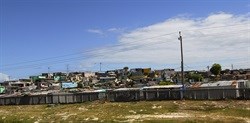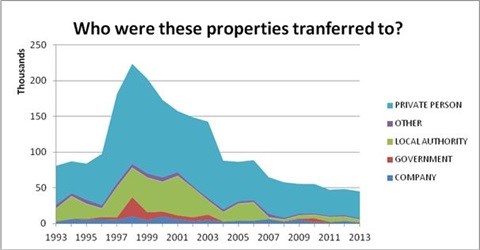There have been many trends within the real estate space over the last 20 years of democracy, that have had a profound impact on the South African property market. So it's important for property professionals to bear these trends and their implications in mind, in order to better adapt their business models and to refine their approach.
The evolution and rise of townships in areas across South Africa is a trend that has definitely had an impact on the property market in South Africa.
Starting to resemble the rest of the SA property market
To put things into context, more than 11,000,000 property transactions have occurred in the South African property market since 1994. Of these transactions, more than 2,000,000 have occurred in areas that have traditionally been referred to as townships. While they are still primarily considered to be areas of low-cost housing and government provided housing, some suburbs within these areas are starting to resemble the rest of the South African property market. There is, however, a clear distinction in the frequency of yearly transactions in townships, as well as a changing relationship between transferor and transferee as the South African economy evolves.
According to Lightstone - a provider of comprehensive data, analytics and systems on automotive, property and business assets - from 1997 to 2003, the property market saw the most transaction activity in South African townships, with more than 55% of all transactions occurring in this period. During this time, of all the transactions taking place in townships, 43% were properties that transacted for the first time and 34% were transfers from the local authorities to private individuals and institutions.
This trend changed radically during the subprime crises in 2007, with the proportion of first-time transactions reducing to 6%. Housing activity, however, did not come to a grinding halt during this period with the amount of private individuals that sold their properties increasing from 10% in 2003, to its highest levels in 2008 at 43%.
There are currently about 1,850,000 registered properties in South Africa that were traditionally known as townships. Over the last two decades, these areas have evolved immensely with the introduction of RDP and other state subsidised houses, and the transfer of land and stands from government and local authorities to private individuals.
Of the nearly 1,850,000 properties, about 530,000 are registered as RDP properties, while another 275,000 are registered as other forms of subsidised properties or properties that were once built on land under a 99 year lease agreement. In the case of the latter, the land has now been transferred to the homeowner.
The townships that have seen the majority of property transactions taking place are found in Soweto. Soweto is one of the largest townships in South Africa and resembles many other townships with its fair share of informal housing, subsidised housing, as well as private developments. Since numerous property transfers in townships are from government and local authorities to private individuals, the average transfer price is sometimes very low.
In the past decade, it is interesting to note that properties within Soweto have mainly been transacting between private individuals, leading the increase in the market value of township properties. Over the period of 2000-2004, the average transaction value of most properties in Soweto that were sold by a private individual, was below R100,000. Since 2009, this value has increased dramatically across the different types of properties.
The median transaction price of RDP houses and other forms of subsidised properties have increased by more than 500% in the past couple of years, while non-subsidised house transaction prices increased by about 300%. The discrepancy in price growths between these types of properties should, however, even out in time, due to the fact that RDP housing and other forms of subsidised properties have been growing from a lower base.




























